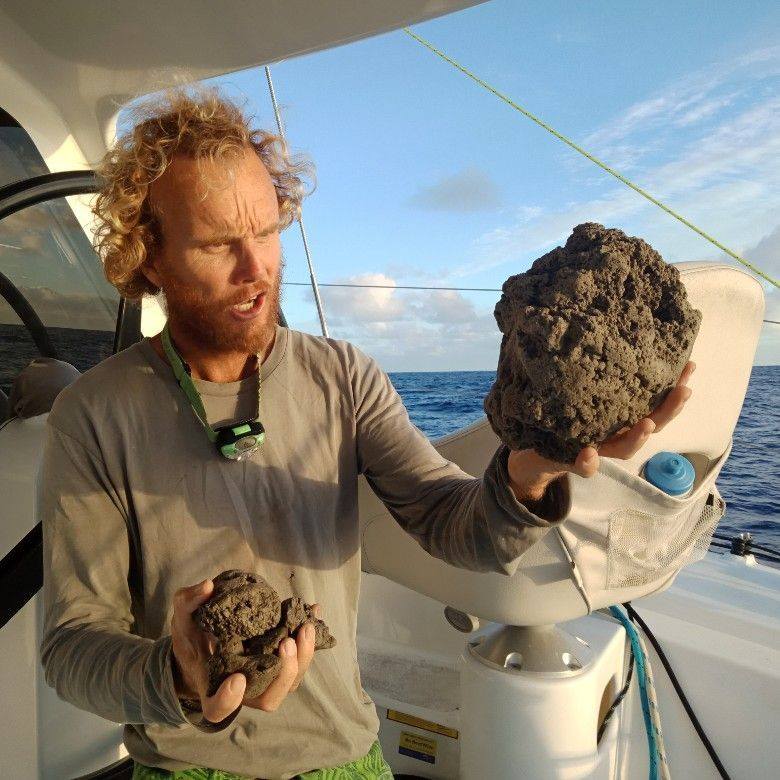Satellite photos show what appears to be a new island floating in the middle of the Pacific Ocean — but not all is as it seems: you’d fall right through if you ever tried to step on it.

NASA‘s Earth Observatory says a massive grey sheet floating on the Pacific Ocean is actually a “raft” of pumice stones all drifting together across the waves south of Fiji. The buoyant rocks are filled with air bubbles created by the underwater volcanic eruption that spawned them, according to the space agency.
Together, the pumice stones have formed a lengthy raft measuring approximately 50 kilometres wide and 20 kilometres deep. That gives it a total area of nearly 200 square kilometres — more than three times the size of Manhattan Island in New York City.
NASA says a sailor reported seeing a cloud of smoke from a potential volcanic eruption in the area on Aug. 7. Reports started pouring in two days later from sailors who spotted the pumice raft from afar.
Several sailors have shared photos and video of their encounters with the pumice raft over the last month.
Michael Hoult and his partner, Larissa Brill, shared a lengthy Facebook post about their catamaran’s encounter with the pumice raft in the dark on Aug. 15.
“We entered a total rock rubble slick made up of pumice stones from marble to basketball size,” Hoult wrote on Facebook. “The rubble slick went as far as we could see in the moonlight and with our spotlight.”
He says the rocks started interfering with their boat’s rudders and clanking against its hull, so they slowed down and retraced their route to escape.

Get breaking National news
Hoult says there was a “faint but distinct smell of sulphur” among the rocks.
In a follow-up post, Hoult says he was worried that there might have been boulders the size of a car or a fridge among the volcanic rocks.
“Very glad we got out of there without striking something like that,” he wrote. He added that they only stumbled into the raft because it was nighttime. Otherwise, he suspects they would have easily spotted a “50 km-wide desert floating on the ocean.”
Sailor Shannon Lenz says she sailed through the field of pumice for six to eight hours on Aug. 9.
“There was no visible water,” she wrote in the caption on her YouTube video of the incident. “It was like plowing through a field.”
Geologist Scott Bryan says pumice rafts of this size typically occur about once every five years.
“It is a phenomenon reported over time, usually as islands in the middle of the ocean that people encounter but then can’t find again,” Bryan told BBC News.
Bryan is also a professor at the Queensland University of Technology, where he and his team are studying samples from the raft that range from “marble to basketball size.”
In a separate interview with CNN, Bryan said these pumice rafts can help promote new ocean life in the Pacific Ocean, including perhaps in the Great Barrier Reef off the coast of Australia.
“Each piece of pumice is a vehicle for something to attach and grow and be transported across the ocean,” Bryan said. He explained that the pumice can pick up tiny organisms as it travels across the ocean. It then sinks to the bottom when it becomes sufficiently waterlogged, creating a new base for coral or other sea life to grow.
NASA says the raft is beginning to disperse, but it’s still visible from space.






Comments